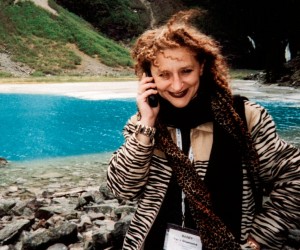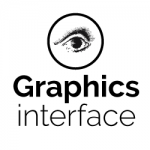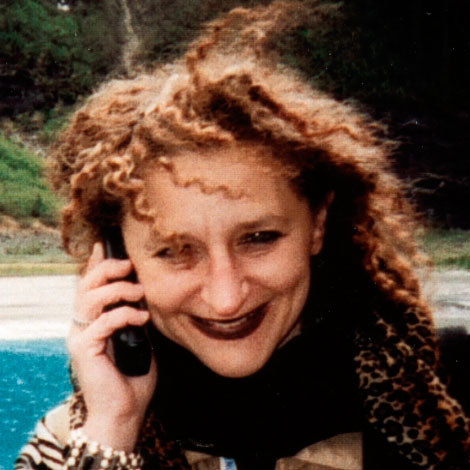Sara Diamond is a Canadian Digital Media Pioneer who has long championed interdisciplinary collaboration — engaging artists and designers with engineers and scientists in a spirit of diversity and inclusion. From 1992 to 2005 she initiated visionary programs at the Banff Centre, Canada’s preëminent arts and creativity incubator. The Banff New Media Institute, created and led by Sara during its first decade, provided a national venue and an international forum for exploring many of the ideas and challenges emerging from digital media.
An artist, video curator, cultural critic, television-video producer, and an instructor at art centres and colleges throughout North America, Sara is widely published in Canadian and international art and social history journals. Her series of articles in 1985 on cultural politics and feminist ideology investigated the class position of artists and women and links to the production of culture. She later organized several events for Aboriginal artists, producers, directors and critics encouraging dialogue within Canada, and across the United States and the Pacific Rim. These included a series of Aboriginal streaming workshops that examined local radio and television practices of First Nations in Canada and Aboriginal peoples throughout the world, the use of streamed media for creative processes, and technologies such as the World Wide Web as vehicles for producing and disseminating First Nations and Aboriginal art and culture.
With the creation of the Banff New Media Institute, Sara introduced a uniquely Canadian response to digital media as an emerging cultural force. It succeeded in providing a new convergent space for art, design, science, and technology. Developed as both a physical and virtual centre, the institute created and supported research, social networks, artworks, designs, technologies, theorizations, economies, and even companies.

For many, the Institute was a site of first engagement for dialogues, strategies, and practices responding to the intensive technological changes underway: the massive adoption of “new media” (and later “digital media”), and the rise, fall, and re-emergence of the digital economy. As documented in her book (co-edited by Sarah Cook) Euphoria & Dystopia: The Banff New Media Institute Dialogues, Sara hosted important international think tanks and collaborations at the BNMI on information and communications technology, digital media, and scientific research, including a series of influential summits examining the relationship between art and technology. Invited artists, designers, critical thinkers and scientists from Latin America, Africa, Asia, Central and Western Europe, the United States and Canada coalesced in cross-disciplinary teams that explored the many perspectives and effects of “going digital.”
The summits were forums for “design thinking” about the digital world, and helped researchers and practitioners at the forefront of their fields share ideas and visions. Most importantly, the summits engendered in participants a new appreciation for interdisciplinary collaboration. They also helped provide a basis for new initiatives, including the vision for a pan-Canadian digital media research network that formed the early nucleus for the GRAND Network of Centres of Excellence.
Social issues have been at the core of her work, along with family relationships, labour struggles, and modern day working conditions – especially for women. Her role in advancing artists’ and designers’ work in new technologies has been widely recognized, and her own practice as a new-media artist is heavily influenced by design. She acknowledges that “I … position myself between the two fields … [t]he participatory, iterative process of design – the rigour of the design process – I find that very attractive.” Her ambitious CodeZebra project combines art and science and includes CZOS, an “advanced web based visualization tool that enables conversation between different individual and groups on the Internet.” CodeZebra won a Canadian Digital Innovation Award in 2003.
As President of OCADU, Sara continues her efforts to promote interdisciplinary research and to build digital media industries in Canada. The Digital Futures Initiative and other new research initiatives are exploring the intersections of design with such areas as health and sustainable technologies. She also played a leading role in establishing OCADU’s unique Aboriginal Visual Culture Program and is a co-principal investigator in the Centre for Information Visualization/Data Driven Design, a cross-disciplinary initiative with York University that brings together artists, designers, engineers and scientists.
For many years, Sara has been a catalyst in bringing together the many disciplines within the digital media community in dialogue and collaboration. Her leadership at the Banff New Media Institute helped keep Canada at the forefront of international research and practice, while inspiring many others to follow in her footsteps. For this and many other contributions to Canadian digital culture, Sara Diamond is recognized as a Canadian Digital Media Pioneer.
Biography
Born in 1954, Sara Diamond received a BA in History and Communications from Simon Fraser University, and an Masters in Digital Media Theory from the University of Arts, London, and a PhD in Computing, Information Technology and Engineering from the University of East London. She has taught at the Emily Carr College of Art and Design, the California Institute for the Arts, University of California, LA (where she continues as an Adjunct Professor) and the Technical University of British Columbia. Beginning in 1992 she was the Director of the Television and Video Program at the Banff Centre and later the Artistic Director of Media and Visual Art, Founding Director of the Banff New Media Institute and Director of Research. Since 2005 she has been the President and Vice-Chancellor of the Ontario College of Art and Design University (OCAD University).
Diamond has published articles and reviews in Canadian and international art, culture and labour publications including FUSE Magazine, Vanguard, C Magazine, Video Guide, Parallelogram, Popular Studies Journal, and B.C. Heritage. Her video art and broadcast works have been exhibited and screened in Europe, England, Mexico, the Pacific Rim, the United States and Canada, and at numerous video and film festivals around the world. Her videos and installations are in many collections such as the National Gallery of Canada where she had a retrospective in 1992, the Museum of Modern Art in New York, the Canada Council Art Bank and the California Institute of the Arts. She has served on numerous advisory boards and committees including the Executive of the Council of Ontario Universities, the Ontario Ministry of Culture’s Advisory Council on Arts & Culture, the Standing Advisory Committee on University Research and the Standing Advisory Committee on International Relations for the Association of Universities and Colleges, and the expert panel on the State of Science & Technology in Canada for the Council of the Canadian Academies. She is an appointee of the Order of Ontario and of the Royal Canadian Society of Artists and a recipient of the Queen’s Diamond Jubilee Medal.
Selected Works
Diamond, S. & Roberts, V. (2012) Taking Ontario Mobile, Toronto: Mobile Experience Research Centre.
Diamond, S. (2012) Many Points of Light: Visualization and the Converging Aesthetics of Art, Design and Science, Reprinted 2012, in Critical Digital Studies Reader. ed. Kroker, A. & M. L. Toronto: UT Press.
Diamond S. (in print) Moving Softly Forward, In Borders and Interfaces: The Challenges of Wearable Technology Design, eds. Paraguai, L. & Zuanon, R., Sao Paolo: Assunto Press.
Diamond, S. (2012) with Cook, S., Euphoria and Dystopia: The Banff new media dialogues. Banff: Banff Centre Press and University of Waterloo, Riverside Architectural Press.
Guia, G., Oliver, S., Diamond, S., Chevalier, F. (2012) Visualizing Sentiments in Business Customer Relationships. ACM, CHI’12, May 5–10, 2012, Austin, Texas, USA.
Oliver, S.; Gali, Guia, Chevalier, F. & Diamond, S. (2012) Fracturing Media Paradigms: Online Navigation of Online News Media. ACM. DIS 2012, June 11-15, 2012, Newcastle, UK.
Diamond, S. & Lewis, L. (2011), Innovation by Design: Differentiator in the Digital Age. Ed. MacDonald, L. I., Policy Options, September, 2011.
Diamond, S. (2010) Mapping the Collective, In (ed) Vesna, Victoria and Paul, Christiane, Context Creators, Cambridge: Intelligence Press.
Chevalier, F &. Diamond, S. (2010) The Use of Real Data in Fine Arts for Insight and Discovery: Case Studies in Text Analysis IEEE VISWEEK 2010, Discovery Exhibition, Salt Lake City, October 2010.
Diamond, S. Moving Out of Bounds (2010) In Buckley, B. & Conomo, J., eds. Rethinking the Contemporary Art School. Halifax: NSCAD University Press.
Diamond, S. (2009) Participation, Flow and the Redistribution of Authorship: The challenges of collaborative exchange and new media curatorial practice. In: Paul, C., ed. New Media in the White Cube and Beyond. Berkeley: University of California Press, Chapter Seven. pp. 135 – 162.
Diamond, S., Ladly, M. (2008) Creating Methodologies for Mobile Platforms, in (eds) Ladly, M. and Beesley, P. Mobile Nation. Waterloo: Riverside Press.
Diamond, S. (2008) Reframing the Cathedral: Opening the Sources of Technologies and Cultural Assumptions, In (ed) A. & M. Kroker, A. & M. Critical Digital Studies Reader. Toronto: University of Toronto Press.
Diamond, S., & Code Zebra Inc. (2000-2010): CodeZebra (CodeZebraOS, performances, wearable technology). www.codezebra.net. Canada, UK, Netherlands, Hungary, Finland.
Diamond, S. (Co-producer). (1995). Fit to be Tied. Canada: Women’s Television Network.
Diamond, S. (Artist). (1992). Patternity. (Installation). Vancouver: Vancouver Art Gallery.
Diamond, S (Director) (1992). On to Ottawa. Canada.
Diamond, S. (Producer). (1990-1991). The Lull Before the Storm. Canada: Knowledge Network.
Diamond, S (Producer). (1989). Ten Dollars or Nothing. Canada.
Diamond, S (Producer). (1987). Keeping the Home Fires Burning. Canada.
Diamond, S (Producer). (1984 – 1985). Heroics. Canada.
Diamond, S (Producer). (1982). The Influences of My Mother. Canada.






 Photo courtesy Sara Diamond.
Photo courtesy Sara Diamond.